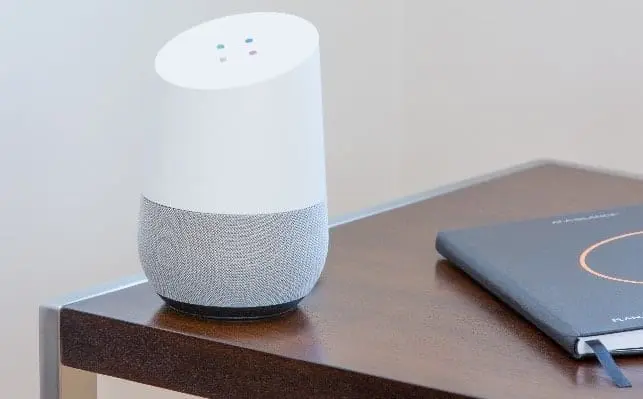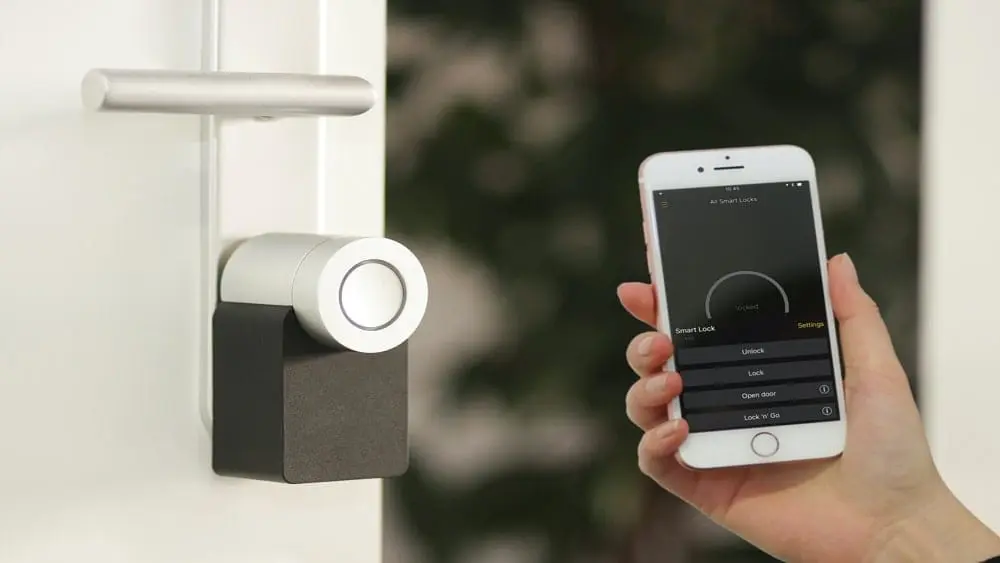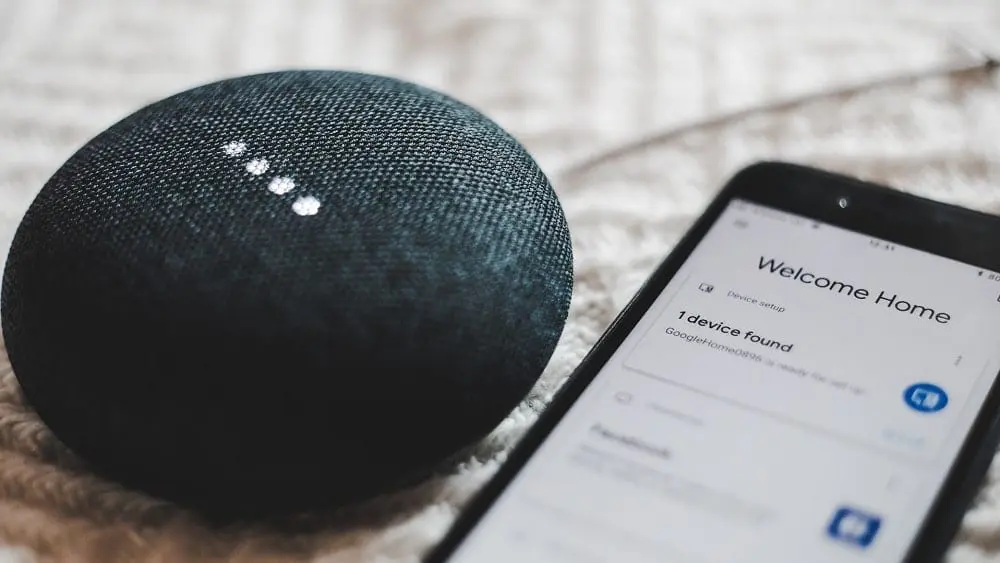
Smartphones, tablets, TV screens – they’re every parent’s unofficial babysitter when they need a bit of quiet time to get dinner on the table or make an important phone call. But between helping your kids with spelling or geography and setting up a bedtime routine, smart home technology is incredibly useful for busy families.
Kids are becoming more tech-savvy than ever. Fifty-three percent of youngsters 11 and under have their own tablet device, according to 2019 research conducted by Common Sense Media. By age 13, the number soars to 84 percent.
Smart home tech is also on the rise in American families’ homes: 69 percent – or 83 million households – own at least one smart home device based on 2019 estimates by the Consumer Technology Association.
The CTA reports that smart entertainment devices are most used in households adapting to smart home technology, followed by voice assistants, smart security systems, smart thermostats and video doorbells.
Ultimately, busy parents juggling kids and running the household can turn to smart home features to save time, lower stress and bring the family together in a safe environment.
Here’s a look at eight ways smart home technology can help young families.
Your Kids’ Digital Helper
There’s a reason why the classroom has embraced laptops, smartphones and tablets: they’re great hands-on educational tools. Voice assistants and smart speakers are no exception.
Alexa, Siri, Amazon Echo and Google Home are all household names. A 2018 report estimates that 20 percent of Americans had a smart speaker in their home. Adults use them for everyday tasks, big and small, from sending a text while our hands are full to setting a timer to bake a cake.
But kids can also use them for virtually any task. Your child can ask Alexa for the day’s forecast to determine what to wear – or set an alarm to make sure they are out the door on time.
Common Sense Media’s research found six in 10 kids do their homework on a computer. They can quickly ask their voice assistant when the Civil War began or to learn who was the tenth president of the United States. (It’s 1861 and Thomas Jefferson – thanks Siri!)
Kids can also ask their voice assistant to set a one-hour timer so they can buckle down for essay writing or quiz them on their Spanish vocabulary.
Research suggests kids spend nearly three hours daily watching videos and streaming music online. Voice assistants come in handy, so teens and tweens can cue up their favorite playlist or YouTuber hands-free.
The Baby Monitor 2.0

Remember the walkie talkie-like baby monitors parents once carried around the home to stay on the alert for their baby’s cries? Those dinosaurs are gone; technology has given baby monitors a major facelift, making these devices innovative, sleek, and user-friendly.
Baby video monitors rely on Wi-Fi and 4G to stream video from the crib to your smartphone. The market is flooded with baby video monitoring options: you can choose one based on smartphone compatibility, camera resolution and being able to tilt and adjust the camera remotely from an app. Parents can check on their little ones while at work or running errands, tuning in to see if their baby is still napping. The majority of these products even include built-in audio so you can speak to your baby, or sing her a lullaby to help her fall back to sleep.
Many include white noise machines, night lights and sleep tracking – all of which can be controlled remotely.
Parents can also set up alerts so the motion and sound sensors will notify them if their baby is crying or tossing and turning. This may indicate the app’s video streaming has ended.
Get Ready for Bedtime
A night light is a common fixture in every kid’s bedroom. Night lights have come a long way from the traditional ones. Now smart bulbs create a rainbow of hues; smart lighting can time when the lights turn off and on.
Parents can create a bedtime routine, adjusting the smart lighting so it gradually dims your kids’ bedroom lighting over the course of an hour until it’s bedtime. It’s the perfect atmosphere in which kids can slowly calm down before bed. You can do the same when it’s time to wake up, with “sunrise simulating” lighting to help your kids wake up naturally.
If your kids hate brushing their teeth, recruit the help of your voice assistant. Your smart speaker can distract your kids while they brush, playing music, telling jokes or listing the benefits of brushing. Alexa has a specific function called “Chompers” that interacts with kids, even timing them to make sure they brush for the dentist-recommended two minutes.
Alexa and Siri can double as storybook reader, too, if you set them up for story time before naptime or bedtime. Google Assistant has a Read Along Program with a library of books – read with sound effects! Don’t count out apps like Audible for kids.
After story time, the night light in your child’s bedroom can turn to their favorite color – a shade of blue, green, purple or pink – for some fun.
Connected to Wi-Fi, it can be controlled on a smartphone app. If your kids are staying up past their bedtime, you can turn out their lights remotely.
Smart lighting also saves on the electricity bill. You can pre-set the lighting to turn on when your kids enter the room and turn off once they leave.
Master Your Family’s Morning Routine

Getting your kids dressed, fed and off to school can be downright stressful every morning. Smart home technology can help with your family’s morning routine, beginning with smart lighting that can slowly awaken your kids. And for adults, a smart coffeemaker can brew your cup of Joe before you get out of bed. (One more great thing you can do from your smartphone!)
Smart blinds can also function via smartphone or a timer so they blast your kids’ bedrooms with sunshine by 7 a.m. Monday to Friday. If your kids need a bit more encouragement to rise and shine, you can start their day playing their favorite songs via your home’s smart speakers.
While you prepare to meet your day – smart coffeemaker-brewed coffee in hand – a voice assistant can read the day’s headlines, traffic report and weather forecast.
If you have specific instructions for your kids on pick-up times or where to find their lunch bag in the fridge, instruct your smart speaker to broadcast an announcement.
Home Security to Keep Your Family Safe

Between babysitters stopping by and playdates with the neighbors, busy households see lots of foot traffic. Parents may want some peace of mind that their home entrances are safe and secure with smart door locks and doorbell cameras. These are especially useful if your kids are home alone for a few hours.
Smart door locks are keyless door locks that are activated by a digital code. With keypads, your kids can get started on remembering passwords and codes. You can create one-time key codes for temporary access to the home for babysitters, relatives or your kids’ friends.
Smart door locks are also extremely convenient for parents who need more than two hands. You won’t have to fish for your keys with one hand while wrangling your toddler and holding your groceries with the other!
Who hasn’t forgotten whether or not you locked the door? Now instead of worrying all day, you can confirm this on a smartphone app. If by chance you didn’t lock it, just do so from your phone.
Smart door locks are often paired with doorbell video cameras. These extra eyes help parents see who’s at the front door. You can also doublecheck to see if your kids are following your instructions to never open the door for strangers. The front door camera provides a live feed alert streamed to your smartphone if there is any activity at the entrance. If your kids are expecting friends while you’re at work, you can tune in to make sure everyone gets in safely.
As your kids get older, you may still want to make sure they’re all OK, whether they’re inside the home or in the yard. Indoor and outdoor home security cameras can be your eagle eyes without you hovering over them.
You can set them up in common spaces – the driveway, foyer, or kitchen. These cameras are loaded with motion detection sensors so if something seems off, they’ll send you an alert immediately.
Parents can install sensors to drawers and cupboards to keep kids away from the medicine cabinet and potent cleaning products, too. You’ll receive an alert if the space is compromised.
Watch for Screen Time and Set Parental Controls
There’s no denying it – kids are glued to their screens and it isn’t always clear what they’re viewing.
Parents can invest in a device like the Circle by Disney, which connects with your home’s Wi-Fi, to manage online usage for every device on your network. Parents can apply filters to block websites, apps and videos for their youngest kids, and check out sites their kids have visited throughout the day.
If you’re trying to limit screen time, parents can set limits on apps like Instagram or TikTok. They can even pause the Internet when it’s homework time or if someone hasn’t cleaned their room.
These devices can also display how much time your family – and individual members – are spending online across all devices. It’s useful insight that may encourage you to trade in screen time for family time.
Parents can also set up parental controls on their voice assistants and other smart home tech so they’re password protected. This will prevent anyone from purchasing or accessing content that isn’t age appropriate.
Stay on Top of Your Family’s Schedule

Your kids have soccer practice, bake sales, track meetings, exams – life can get pretty hectic.
Take advantage of the built-in organization that comes with smart home technology, such as Alexa’s Blueprint feature or Google Assistant’s Assignable Reminders function. Plug in key dates for upcoming events and responsibilities and you’ll have a family calendar all set up with notifications sent directly to you and your kids’ devices.
With Google’s feature, you can assign tasks to one of your kids and include a deadline. This way, everyone is on the same page and you won’t need to remind your kids about an upcoming field trip or science project.
These features can also be used to create a family chore chart. When the chores are done, your kids can jump onto the chart and check off their task.
Keep Your Kids Entertained
There is so much for your kids to discover about smart voice assistants and smart speakers. If your kids love Sesame Street, for example, they can learn with Elmo on Amazon Echo. He counts to 10, recites the alphabet and talks to pre-schoolers about his letter of the day.
Smart speakers can also keep your kids busy – and educated – with a string of trivia and quizzes, such as Google Home’s state capitals test or Amazon Echo’s Jeopardy game.
If your kids are getting restless, you can ask Siri to cue up a playlist for a toddler dance party and if they need to wind down, she can play ambient sounds like ocean waves or rainstorms to help them relax.

Carmen Chai is an award-winning Canadian journalist who has lived and reported from major cities such as Vancouver, Toronto, London and Paris. For NewHomeSource, Carmen covers a variety of topics, including insurance, mortgages, and more.
 Best Tiny Home Builders in Fresno
Best Tiny Home Builders in Fresno